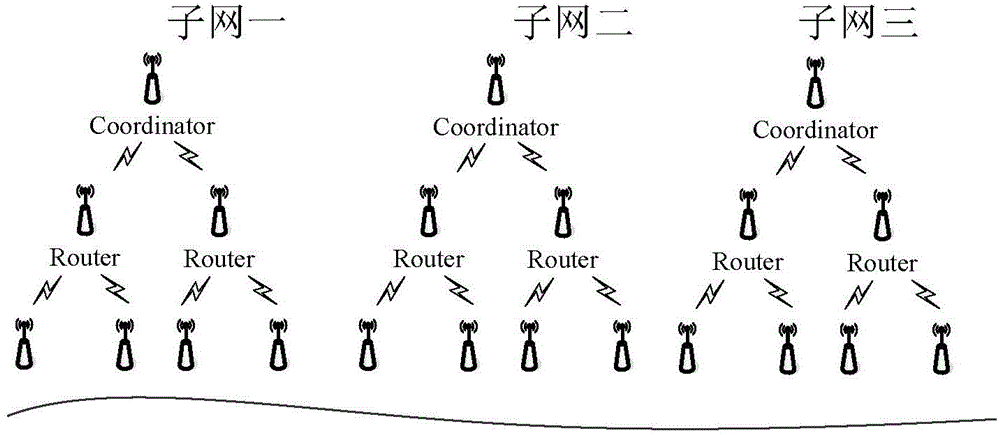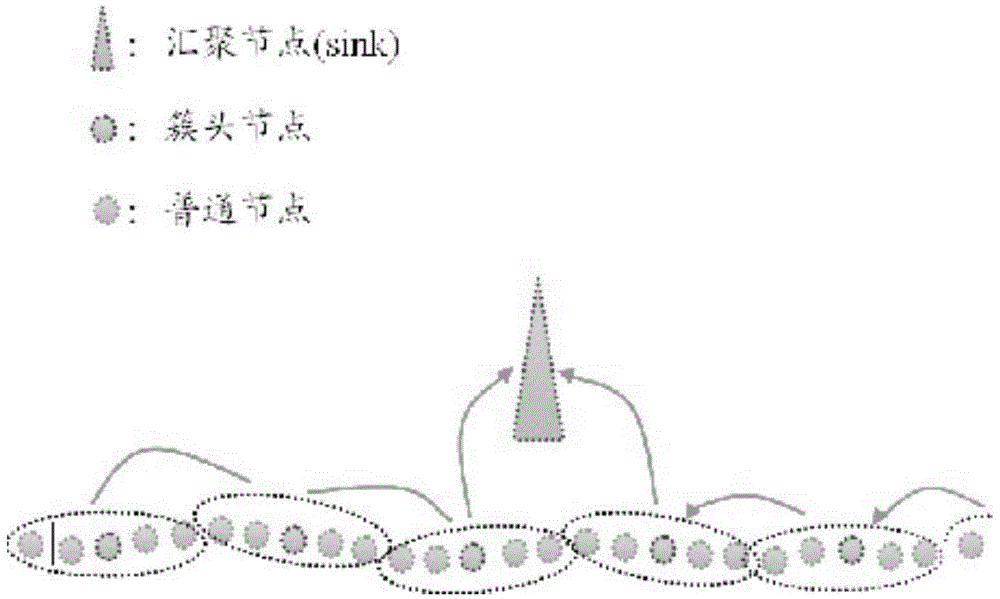Wireless chain-type transmission system
A transmission system, chain-like technology, used in wireless communication, advanced technology, power management, etc.
- Summary
- Abstract
- Description
- Claims
- Application Information
AI Technical Summary
Problems solved by technology
Method used
Image
Examples
Embodiment Construction
[0018] A non-limiting embodiment is given below in conjunction with the drawings to further illustrate the present invention.
[0019] Such as figure 1 As shown, the chain structure is composed of three levels. The bottom layer is composed of ordinary nodes, which are mainly responsible for data collection. The second layer is composed of cluster head nodes. The cluster head nodes mainly gather data collected by ordinary nodes in their coverage areas. Forward the data of its downstream cluster head node to the sink node. The third layer is composed of sink nodes, which mainly send data to users.
[0020] Advantages: The hierarchical structure has good scalability: to complete a longer range of monitoring, only need to increase the aggregation node; it can also reduce the number of hops from the edge node of the chain network to the aggregation node and reduce the delay. Disadvantages: The hierarchical structure only analyzes the feasibility from the theoretical aspect, and does n...
PUM
 Login to View More
Login to View More Abstract
Description
Claims
Application Information
 Login to View More
Login to View More - R&D
- Intellectual Property
- Life Sciences
- Materials
- Tech Scout
- Unparalleled Data Quality
- Higher Quality Content
- 60% Fewer Hallucinations
Browse by: Latest US Patents, China's latest patents, Technical Efficacy Thesaurus, Application Domain, Technology Topic, Popular Technical Reports.
© 2025 PatSnap. All rights reserved.Legal|Privacy policy|Modern Slavery Act Transparency Statement|Sitemap|About US| Contact US: help@patsnap.com



